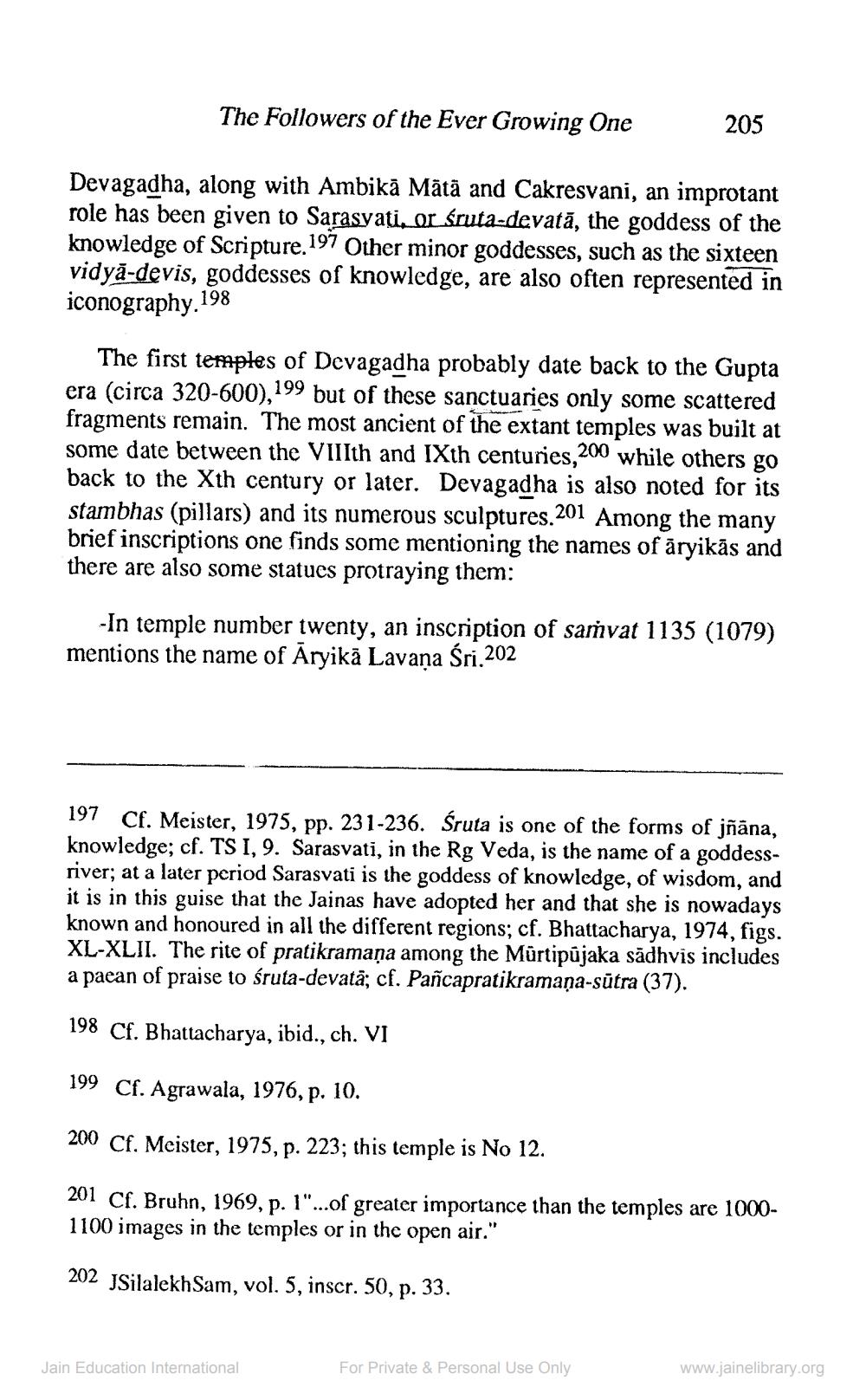________________
The Followers of the Ever Growing One
205
Devagadha, along with Ambikā Mātā and Cakresvani, an improtant role has been given to Sarasvati, or śruta-devatā, the goddess of the knowledge of Scripture.197 Other minor goddesses, such as the sixteen vidyā-devis, goddesses of knowledge, are also often represented in iconography.198
The first temples of Devagadha probably date back to the Gupta era (circa 320-600), 199 but of these sanctuaries only some scattered fragments remain. The most ancient of the extant temples was built at some date between the VIIIth and IXth centuries,200 while others go back to the Xth century or later. Devagadha is also noted for its stambhas (pillars) and its numerous sculptures.201 Among the many brief inscriptions one finds some mentioning the names of āryikās and there are also some statues protraying them:
-In temple number twenty, an inscription of saṁvat 1135 (1079) mentions the name of Āryikā Lavana Śri.202
197 Cf. Meister, 1975, pp. 231-236. Śruta is one of the forms of jñāna, knowledge; cf. TS I, 9. Sarasvati, in the Rg Veda, is the name of a goddessriver; at a later period Sarasvati is the goddess of knowledge, of wisdom, and it is in this guise that the Jainas have adopted her and that she is nowadays known and honoured in all the different regions; cf. Bhattacharya, 1974, figs. XL-XLII. The rite of pratikramaņa among the Mürtipūjaka sädhvis includes a paean of praise to śruta-devată; cf. Pañcapratikramana-sutra (37).
198 Cf. Bhattacharya, ibid., ch. VI
199 Cf. Agrawala, 1976, p. 10.
200 Cf. Meister, 1975, p. 223; this temple is No 12.
201 Cf. Bruhn, 1969, p. 1"...of greater importance than the temples are 10001100 images in the temples or in the open air."
202 JSilalekh Sam, vol. 5, inscr. 50, p. 33.
For Private & Personal Use Only
Jain Education International
www.jainelibrary.org




